Erstellt am: 10. 12. 2011 - 12:51 Uhr
South of South
Subscribe to the Reality Check podcast and get the whole programme after the show.

Johnny Bliss, 2011
My first exposure to Stewart Island, oddly enough, was whilst trying to become tired enough to go to sleep, in a hotel room in Borneo, Indonesia.
I'd opted to pay the equivalent of 10 € to live like a king this night, so my room had air conditioning, TV, and a hot shower- but I digress here.
* - I really like penguins.
I was lying there underneath a mosquito net, and flicking through the channels (mostly all Indonesian), when suddenly I found this English language documentary, with a film crew tramping through some dense forest scene, searching out a rare species of particularly anti-social and independent penguin*. This was the Yellow-Eyed penguin.
Anyway, the crew managed to film one of these solitary penguins very briefly, before it escaped into the underbrush, and then the scene cut to this charming tiny township called Oban: with one supermarket, one pub, one medical centre, and only just over 400 residents. Oban, the narrator told me, was the only settlement on Stewart Island, and Stewart Island was the last easy-access point before Antarctica.
The last easy-access point before Antarctica. These words stuck with me. At the time, I had no idea if I would have the means to get so far south any time soon, but the idea had been planted in my brain.
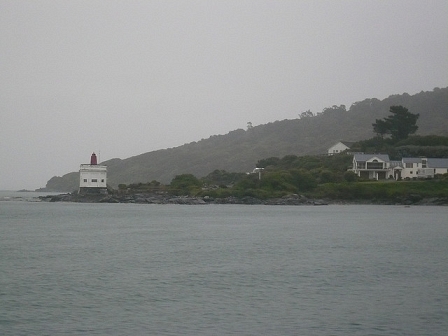
eyeintim @ Flickr
* - near the top of New Zealand's North Island
Roughly two months and four thousand photos later, I met up with a friend of mine from Austria in Auckland*. Being both spontaneous types, we decided our route through the country by opening a map and letting our eyes guide us to what looked appealing. Naturally, we immediately both found Stewart Island at the very bottom of the page, below Christchurch, Dunedin, and even Invercargill, a little spot at the end of the map.
It wasn't a hard decision, once we came to it- it wasn't the easiest route either, but then my friend (Nina) and I would later go on to travel through Burma a.k.a. Myanmar together. Easy locations weren't really our thing.
One flight, one rental car, two buses, and two ferries later, we arrived at the Stewart Island ferry terminal late on a wet afternoon, and were caught a little off-guard by the decidedly cold wind and rain that greeted us.
Because at the time it was also winter in Austria, somehow it felt a little bit bizarre to be so cold and under-dressed on the other side of the earth.
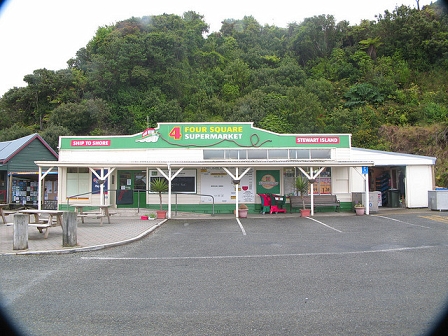
Ben Bowes @ Flickr
Exploring the town superficially did not take very long; the dock led in to the short main street, where most of the stores and businesses were.
Within no time we had located our hostel, the supermarket, and the fish and chips locale we would eat at every day; it was really delicious, thank God, because the only other "eat out" option was at the over-priced hotel.
*- The similarity ends there though, of course; naturally on Stewart Island you could still pay for nearly everything with your credit or debit card.
An interesting thought has occurred to me now: one quality that Stewart Island and Burma turned out to have in common is that both places had neither a bank or an ATM we could go to, to withdraw cash*.
Another shared quality between these two entirely different places: two separate, official names. Where Burma was renamed Myanmar by the military government in 1989, the other name for Stewart Island, Rakiura, comes from the original Māori settlers. Literally translated, it means the Land of the glowing skies. This is considered either to be a reference to the amazing sunsets which the island apparently has (I didn't see any), or more likely, to the Aurora Australis -- the Southern Lights -- which are often visible at night (I also didn't see any, and am still kicking myself for it).

Johnny Bliss, 2011
* - with some exceptions, including a number of rats found on the island- and exterminated- in 2010.
As remote as Stewart Island is, we soon learned it is the mainland to another, even smaller island called Ulva Island, a protected nature sanctuary just a short ferry ride away; and where Stewart Island has faced a constant struggle in modern times keeping invasive species like cats, possums, and rats at bay, the habitat and wildlife on Ulva Island have been mostly spared these foreign intruders*.
What this means in practice is that there are many species of bird living there that are otherwise now either extinct, or extremely rare, elsewhere in New Zealand or the world. These include the kakapo and the kiwi.
The decision to go to Ulva Island inadvertently led me to my first interview, with a dynamic and charming ferry captain by the name of Peter Cox. He has run the Ulva Island ferry to-and-fro daily since nearly 12 years.
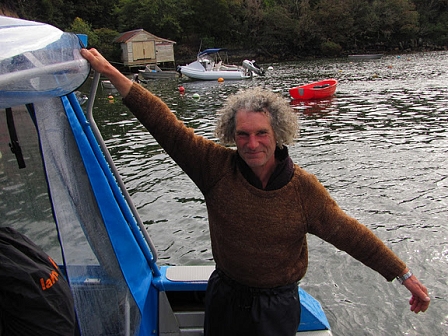
Johnny Bliss, 2011
Peter claimed not to be too keen on social interaction, which took me aback, as he seemed to me a very relaxed and socially comfortable person. The interview with him was very spontaneous, with Peter fielding questions from both Nina and I.
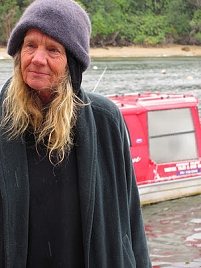
Johnny Bliss, 2011
"I've been living here for the last 25 years," he told me. "I originally came here to work at the [secondary] school, but the roll dropped and I lost my job there, and then just did odd jobs until the boat job came up."
What made you move to Stewart Island in the first place?
"A lot of people have asked me this question, and about two weeks ago, somebody said to me, 'well, you're running away'. And I thought, well, I probably was! This is a place you can come and hide and relax and not have to worry about .. social interaction."
Are there character traits required to live in a place like this?
"Because the climate and the conditions here are a bit rough, you have to be fairly independent and you have to have a certain set of skills to be able to enjoy it. The kind of things that people enjoy doing here is getting out the back door and going straight into the bush. Down here, it's always been a hard life, and it's usually people who have sought something different that have made the effort to come and stay here."
How do you think that the island has changed over the last 25 years?
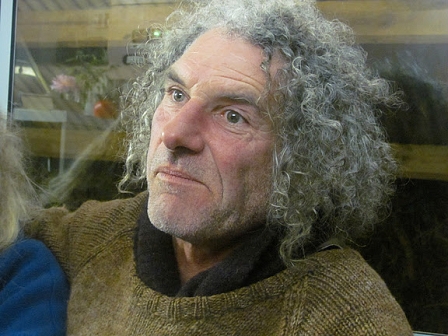
Johnny Bliss, 2011
"I think people's expectations of modern comforts have increased. When I first got here, most of the houses were small, usually built by their owners: they had to generate their own power [with a] coal range and a diesel generator, so people were independent and hardy. Now we have 24 hour power- you can just flick the switch on. The roads are tar-sealed, flash cars are everywhere, and everything seems to be modernized.
"When I came here in '86, it was a very family-oriented place. And now the demographics have changed. If you listen to the district health nurse, they say it used to be trauma and emergencies that they had to deal with, and now 80% of what they deal with is the elderly. So, some of the population, obviously they're getting older… The other big difference is there's no secondary school [anymore]. So we've got no teenagers here."
Can you tell me a little about the community around here?
"I think of it a bit like a family. And there are people in your family who you don't agree with, but when there's trouble, everybody pulls together."
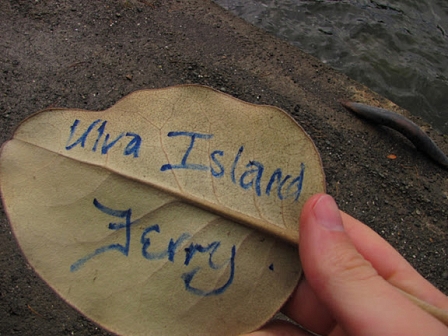
Johnny Bliss, 2011
What kind of troubles are there?
"There are many fishermen that make their living here, and although it's declined, it's not unusual for there to be mishaps at sea. But it is unusual to run into the biggest rock in the bay [during] the day, while you're asleep. We had that a few years ago... and they had to get rescued with the fire brigade, as they got pumped out. It was a little bit embarrassing for them."
Do people constantly remind the fisherman of this mishap?
"Well, it's quite lucky for them because it's not too long before another embarrassing mishap happens, and the spotlight focuses on somebody else. I think the next one was a boat coming ashore. It was a bit rough, admittedly, but it came ashore and it was a yacht. And it came up on the beach, and didn't get rescued in time, and fell over onto its side, and the mast went straight through all the power lines, and knocked out half the power on the bay, and then they couldn't get close to the boat. So there was a bit of panic to turn all the power off. Once again the fire brigade came to the rescue, and they ended up chopping the mast off."
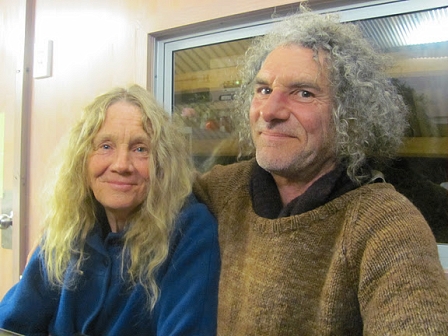
Johnny Bliss, 2011
Can you tell me about the nightlife on Stewart Island?
This made him laugh. "I think you're jumping to assumptions there! Well, because everybody used to have their own generator, when the pump closed, you used to go outside and you used to listen for the one generator that was still going, and that's where the party was, so you used to follow your ears to the generator and party there all night. As we've got a bit older, our lives have changed and our priorities have changed and we no longer feel the need to party as much."
Also it's hard to find a generator these days.
"The parties are still going! Last weekend there were two people arrested for running around without any clothes on… that was a stag do of course, but in the end the police had to be called, so it's still happening."
And when you heard that, you thought, 'that was us 20 years ago!'
"The good old days!" he laughed.
Bird-watching on Ulva Island.
Meanwhile, I bet you're wondering about Ulva Island. After all, I interviewed the ferry captain; surely I must have also actually taken his ferry to Ulva, and walked around the sanctuary for a couple of hours, no? Yes.
Below I have captured some rare and exotic birds and habitat on film.
First there was the Weka, which looks a bit like a Kiwi, but is way more common and ultimately way less exciting. At first we snapped at the wekas like crazy, until we realized they were just about everywhere...
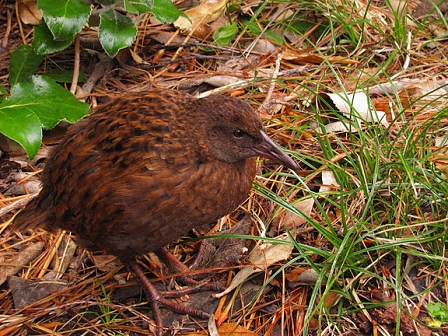
Johnny Bliss, 2011
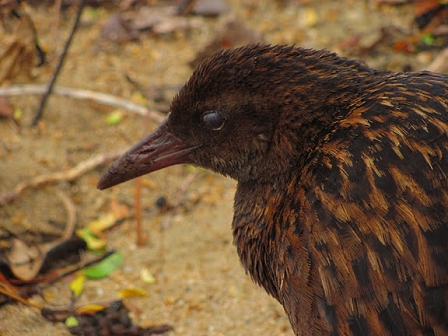
Johnny Bliss, 2011
Then there was this poser, a robin who seemed quite keen for a photograph and stood there pruning itself until I landed this shot.

Johnny Bliss, 2011
Then there was this bird. I have no idea what it is.
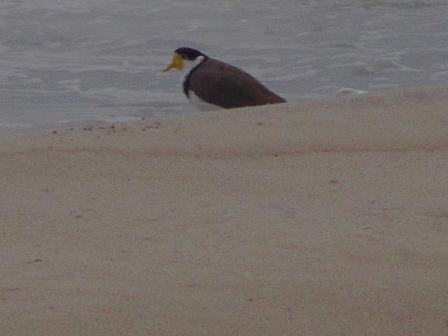
Johnny Bliss, 2011
These serious, running guys are called "Variable Oystercatchers."
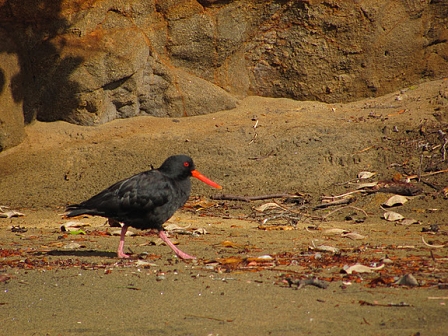
Johnny Bliss, 2011
And then finally, we met a real-life, honest-to-goodness Kiwi.

Johnny Bliss, 2011
The Department of Conservation
Before my all-too-short trip to Stewart Island came to an end, I organized some formal interviews with two members of the team taking care of the local environment: Dale Chittendon, program manager of huts and treks, and Letisha McRitchie, who works in the bio-diversity team.
I was especially curious about Ulva Island.
"Ulva Island is really the remnant of what the whole island would have been like, both in vegetation and birdlife," Letisha told me, "but having those pests on the rest of the island stops those species from expanding.
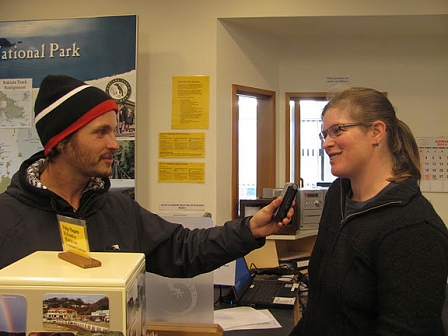
Johnny Bliss, 2011
"When the Māori turned up, they brought rats with them, and they brought their dogs as well. Then the Europeans turned up, and they brought a whole lot more pests with them. This had a big impact on particularly ground-nesting birds, which New Zealand always has had a high number of, flightless ground-nesting species, so those species have either disappeared, gone to off-shore islands, or been reduced in number.
"We're lucky here on Stewart Island that we have a big population of Kiwi, and that's because we don't have a lot of predators that the mainland has; there's no wild pigs, there's no wild stoats or ferrets here, so the main species that would impact upon the Kiwi are the cats."

Johnny Bliss, 2011
"You think Ulva island is interesting?" Dale Chittendon more or less chortled. "You should see the Subantarctics, [which are] just further south. Then you'll get a chance to see what New Zealand was like before these [introduced pests] were there!
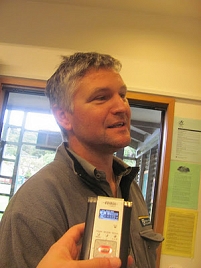
Johnny Bliss, 2011
"You go to one end of the island, and the whole face that you're looking at is just covered in Albatrosses, and I'm talking hundreds of thousands of them.
"You go to the other end of the island and you get penguin colonies, that once again, it just feels like there's hundreds of thousands of them in a small group, and it's just completely Wow Factor. You sorta imagine… Stewart Island's pretty unique on its own but you just gotta see some of these other places to think, wow, what could it really be like."
Letisha: "Some of those islands down there have had pests removed off them. Campbell island, which is 11,000 hectares, is the largest island in the world that's had rats removed off it, and maybe someday Stewart Island will have all those pests removed off it.
"Bio-security would be the huge thing. I mean, removing the pests-- technically, it can be done. It's keeping them off again, you know, with the ferries and the planes and the fishing boats coming over, bringing rats and the like back to the island. But if everyone pitched in and everyone worked towards it, it could be done."
But can you tell me a little bit more about the interior of the island?
Dale: "Stewart Island Rakiura is about 150,000 hectares, certainly a lot bigger than what people think. 90% is national park. You go to one side of the island and you get sand dunes running into the hills for the miles. You travel to the top end of the island, you get your windswept forests. Bottom end of the island, you get your granite hills and trees, growing down into the water, so it's all very different. Then the rest is very remote, and very few people get into the interior of Stewart Island…"
Is that how you would prefer it?
"No, it's not how we prefer it, it's just that access, getting into a place like this, is actually fairly difficult. So most people, if they're trying to access anywhere, will follow the tracks."
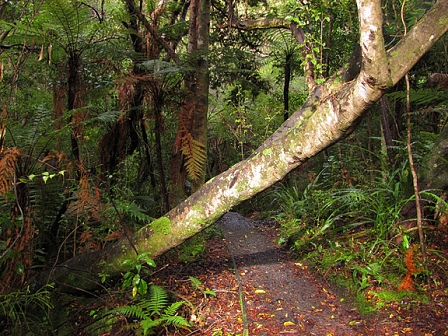
Johnny Bliss, 2011
Let's talk about the climate around here. It's been quite cold and wet since I've been here. But it's summertime. What gives, man?
Dale: "We, being an island, the weather comes and goes, and it just races over Stewart Island really quickly. There's no hills or mountains that are really holding the weather, so you get rain, sun, rain, sun, 3-4 times in one day. So even though we only get one and a half metres of rain per year, which actually isn't a huge amount, the amount of rainy days that we get per year is actually quite high. It's 260 days of rain. Once you get used to it, you never go anywhere without your raincoat, because you might leave and it's beautifully sunny outside, the next thing you're only ten minutes out somewhere and the clouds come over and it'll be raining."
Letisha: "You can get big gales coming through, which batter the island. Big winds coming on that bring the salt spray onto the island, which can affect the trees and everything too, you can get some die-offs. It's happened before on a big scale."
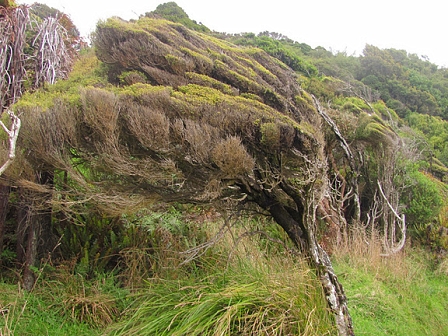
Johnny Bliss, 2011

Johnny Bliss, 2011
Do you feel the isolation of being in a community of less than five hundred people? I mean, does it get to you sometimes?
Letisha: "Not for me, personally. Certainly there are people that it does get to. There are people who come here, don't like it, and leave, and there's people who come here and love it and stay forever. I grew up in a small rural community and I've always liked small communities, so I don't find it isolating. I get to town regularly enough to do town stuff.
"I imagine, before the internet this place would have been a lot different but now you can buy anything on the internet, you do all your banking on the internet, pay your bills on the internet…"
Do you have a hospital here?
"We have a medical centre. They're great facilities, so we're pretty well-looked after for that."

Johnny Bliss, 2011
Did you have your baby here?
"I didn't have my baby here. I went over to Invercargill [on the mainland]. Generally, they recommend you go off two weeks beforehand and then sit and wait, which can take who knows how long, but my second baby I won't have here either. I was quite happy to go to the hospital."
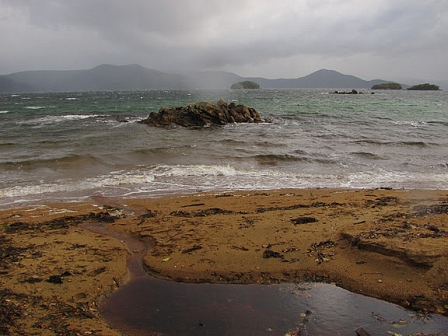
Johnny Bliss, 2011
What other complications can arise when you're living here?
"There's some inconveniences of living here, you know, trying to deal with IRDs (Inland Revenue Department), saying oh you have to go and get this piece of form signed off on in their office in Invercargill, and I'm like, 'well, I live on Stewart Island and it's going to cost me $120 dollars to go and get a stamp on this piece of paper, and why do I have to do that?'
"But most of the time you can get around it, you can get a JP here on the island to sign you a bit of paper. Things like that can be a hassle, and things like going to the dentist, just the cost of that. So when you go to town, you say, 'OK I have to go to the dentist, so what else do I have to do?' and you go to town with a great big shopping list, because you have all these things that you have to buy, and you might have to go to the dentist, and you might have to visit something else, and go get some forms signed somewhere, so you have to be very organized."
Closing thoughts
I left Stewart Island wondering if I could ever truly live in a place like this, both instantly familiar and simultaneously foreign to me. The world I knew seemed to have ever so slightly changed its size.
And yet: I had the feeling that this world I had encountered was also changing its shape. Even and especially here, this way of life was being slowly and irrevocably altered.
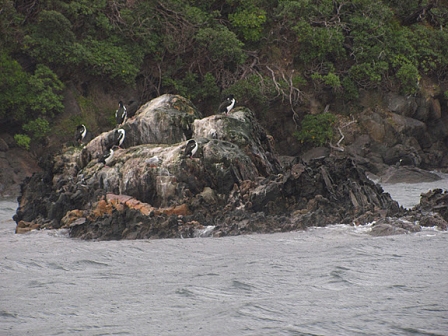
Johnny Bliss, 2011
--
Special thanks to my travel partners in New Zealand, Nina and Martina, for helping make this trip a reality, and Peter and Anita, for being willing to tell us so much about your lives.


